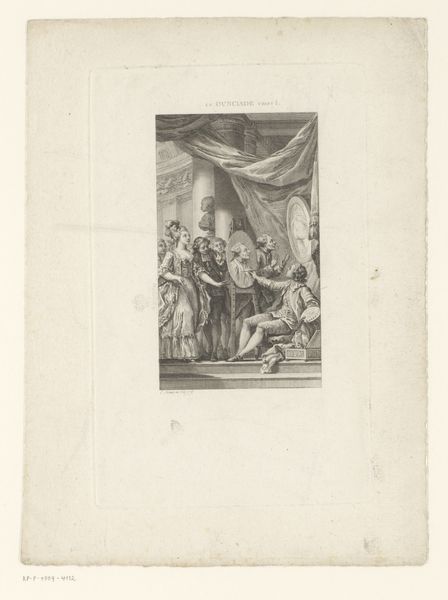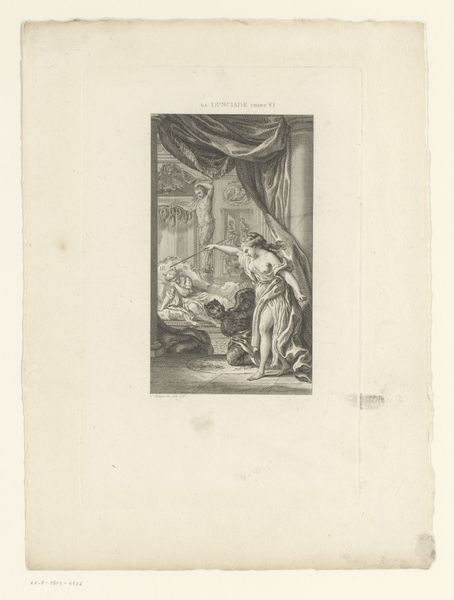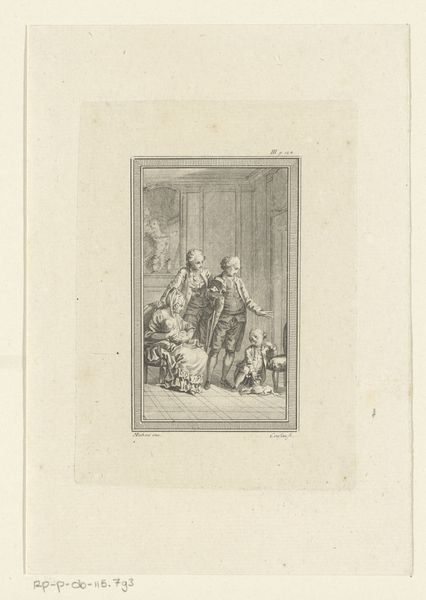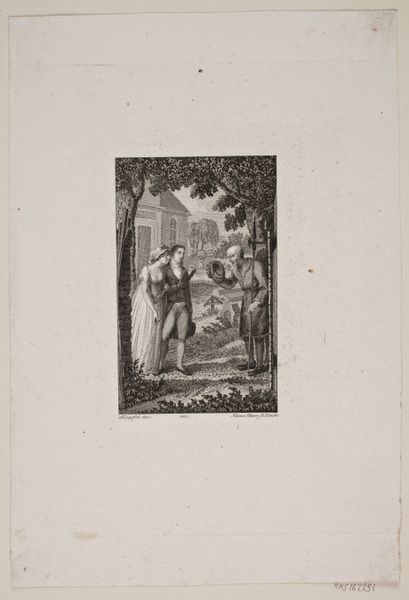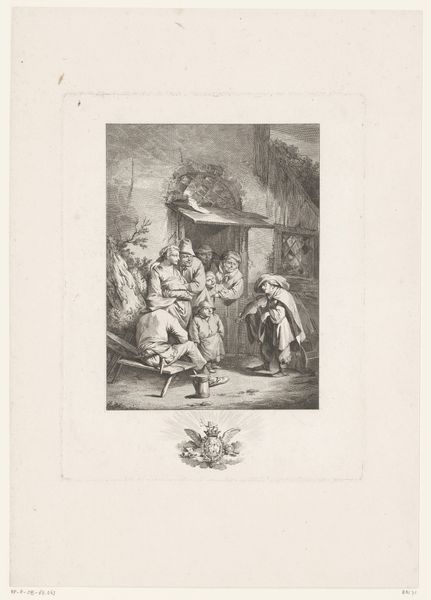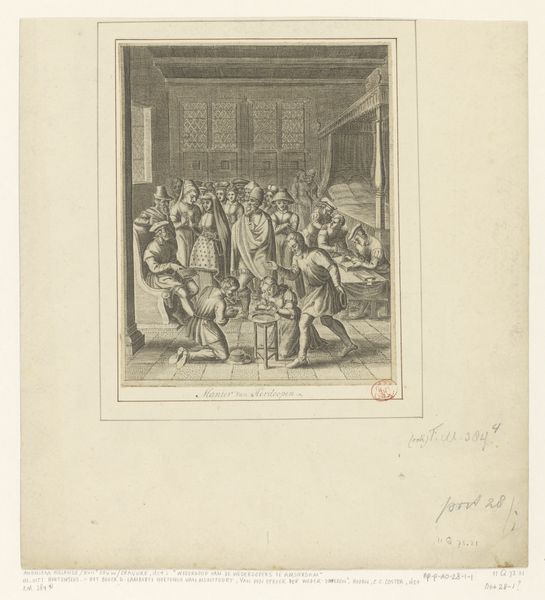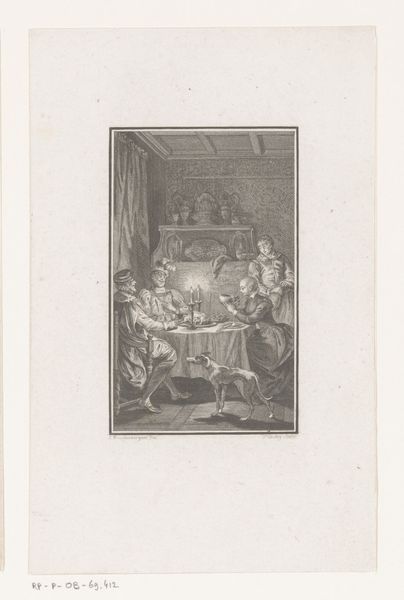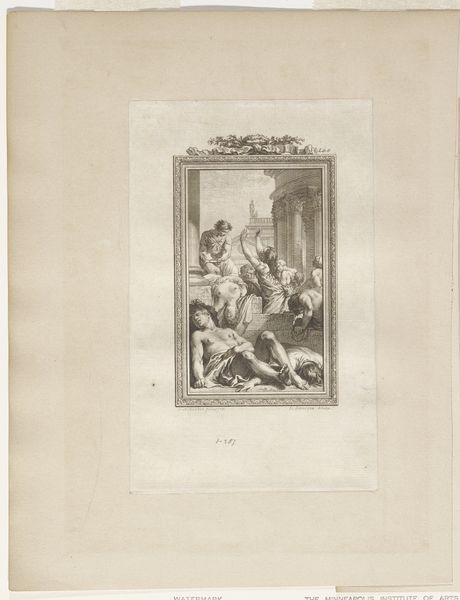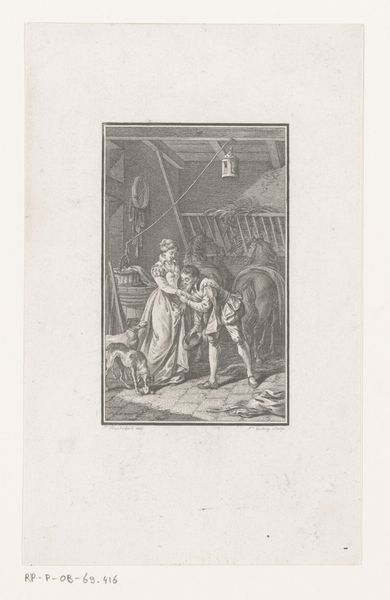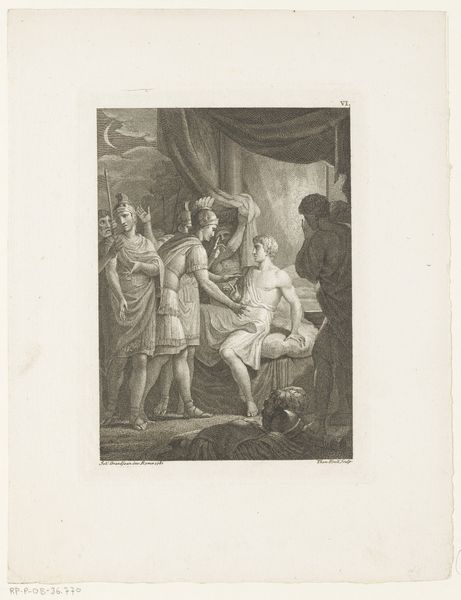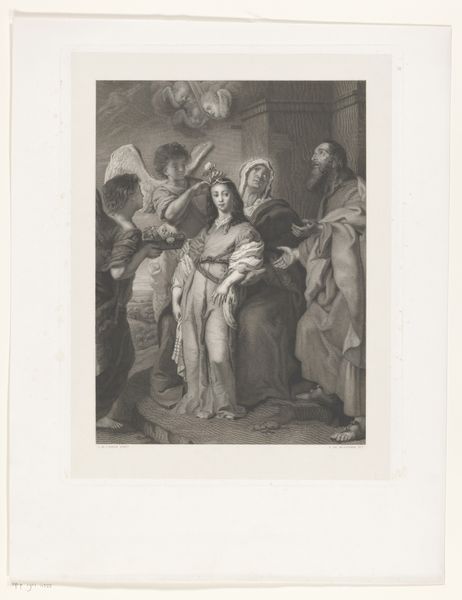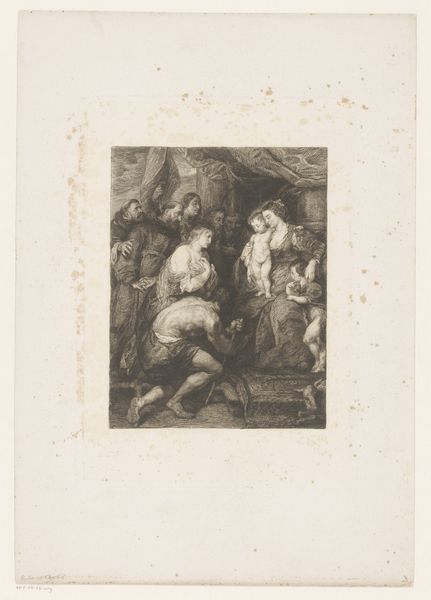
Dimensions: height 231 mm, width 145 mm
Copyright: Rijks Museum: Open Domain
Curator: Here we have an engraving, made anonymously between 1776 and 1800. It’s titled, "Scene from a poem with a Throned Woman." What are your initial thoughts? Editor: It feels theatrical, almost operatic. The central figures are staged in a way that directs our gaze immediately to the woman on the throne, who seems at once powerful and rather world-weary. Curator: Well, thinking about its production as a print – engravings like this circulated widely. So we need to consider how its materials – paper, ink, the very act of engraving – facilitated the spread of this kind of imagery. This print is reproducible, meant to reach many, not the few who could afford a painting. Editor: That's fascinating. Given its date, it reflects a moment rife with socio-political tension, as society questioned existing hierarchies. Seeing a woman depicted in power raises many questions: who is she? What poem does this scene draw from? And, importantly, what kind of power is represented, and what commentary might be implied, intended, or interpreted by the contemporary audience? Curator: Right. Look at the labor involved: the skilled hand of the engraver, the quality of the paper, perhaps imported. It’s an item of consumption that depicts power, and its value rested, in part, on how skillfully that message of power was rendered. Even the depiction of fabrics within the print gives us clues about trading, colonialism and economic drivers. Editor: I agree that the depiction of fabric signifies so much—trade, privilege, access—yet, also, it highlights representation, the politics embedded within visual culture. The fact it is based on a poem indicates an intent to visualise text in such a way as to inspire specific reaction. I think this piece invites speculation about whose interests such depictions serve. What are the gender dynamics? The assumed narratives? The artist’s intent versus the audience’s perception? Curator: It makes me consider the networks necessary to make art and commerce viable. This piece is clearly more than a static representation—it represents tangible resources, access, and skill. I'm curious what other kinds of economic data can be drawn from its creation and circulation. Editor: Ultimately, analyzing this artwork as a product of a specific cultural, historic, and social context illuminates not just artistic skill but also how images reflect, construct, and perpetuate ideologies. Thank you! Curator: An approach through the lens of materiality certainly gives us an insight into the complex world in which these images were made. I really enjoyed this.
Comments
No comments
Be the first to comment and join the conversation on the ultimate creative platform.
